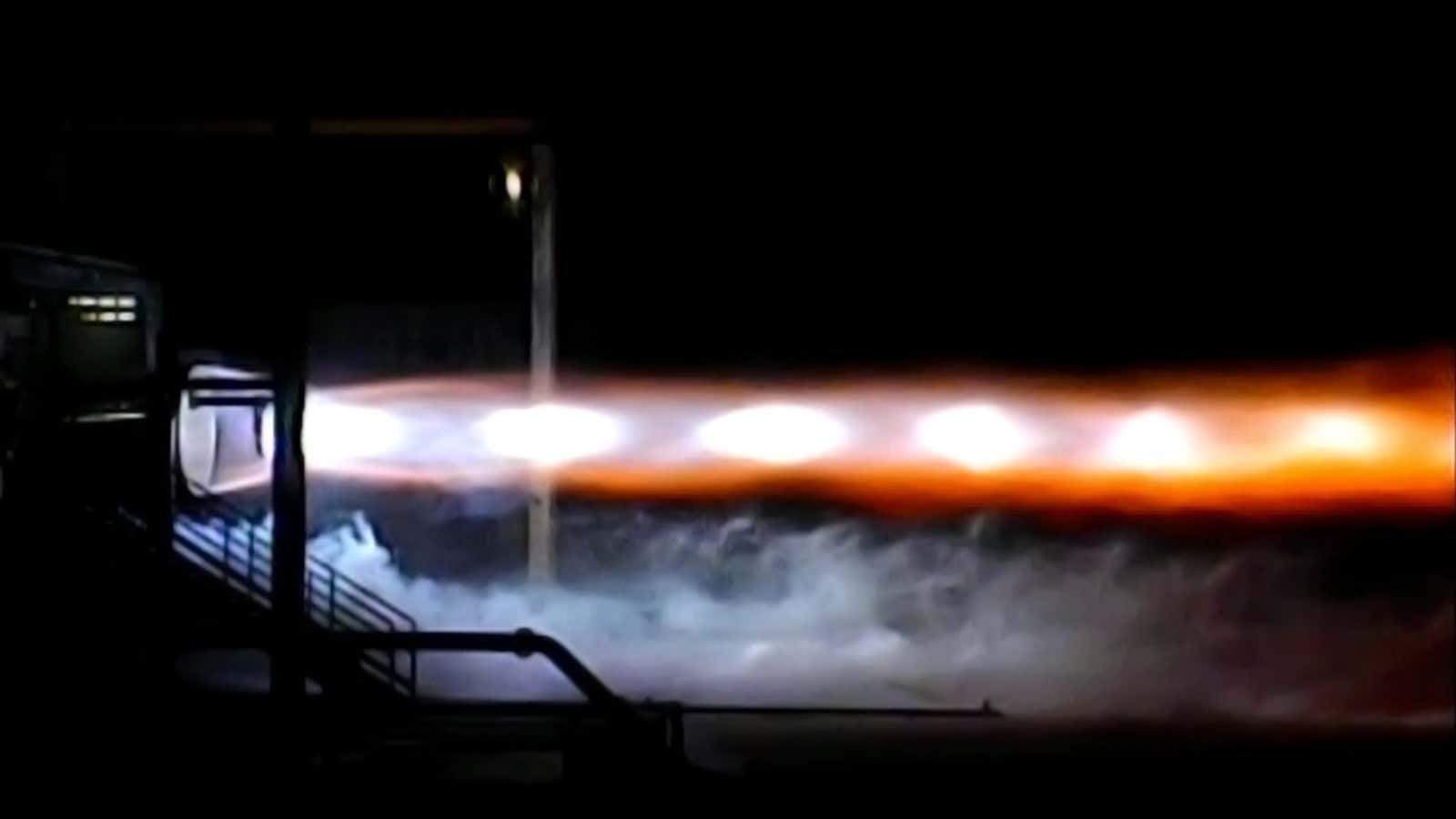Behold six glorious seconds of the most powerful natural-gas powered rocket engine you’ve ever seen:
This engine was built by Blue Origin, the space company owned and funded by Amazon founder and drone video enthusiast Jeff Bezos. This represents a triumph for Blue Origin: Rocket engines that use liquid propellant, in this case oxygen and methane, are incredibly difficult to build and manufacture, requiring years and typically costing hundreds of millions of dollars. The advantage over solid-fuel rocket boosters, which rely on dense propellants akin to fireworks, is that they are more efficient, easier to control, and reusable.
The company has been working on this engine since at least 2014. The successful test represents a quick recovery from an accident that blew up much of the engine earlier this year. Blue has also flown a much smaller New Shepard rocket, designed to carry people to the edge of space and back.
The BE-4 is designed to lift the huge New Glenn rocket Blue wants to fly in 2020. It is also the leading contender to be the main in engine in a new rocket being built by United Launch Alliance (ULA), a joint venture between Boeing and Lockheed Martin that is desperate to replace the Russian engine it now relies on. Since both ULA and Blue will likely be competing for business eventually, the fact that they’re planning to use the same engine promises some future awkwardness.
But the biggest threat here is to Elon Musk’s SpaceX, which was the last private company to develop and fly a liquid-fueled rocket engine in the US. SpaceX’s low-cost liquid-fueled Merlin engine has powered its workhorse Falcon 9 rocket and reusable first stage, rapidly taking huge swathes of the launch market. Now, the company is working on larger rockets like the Falcon Heavy, expected to fly for the first time this year, and the BFR, a longer-term vision for planetary exploration that also uses a natural gas engine. If Blue or ULA can get their heavy rocket off the ground first, SpaceX could find itself leap-frogged.

We’ll have to wait years to see. Blue Origin did not respond to questions about the engine test, whether it was conducted at full power, or when the company expects its test program to be completed. For the Merlin engine, the path from the first hot fire to running the engine the full length of a rocket’s flight took about 15 months. It wouldn’t be flown in a real launch for almost two years after that. Given Blue Origin’s historically slow development process, this is merely a first step.
The sea change here is that US space firms like SpaceX and Blue Origin are designing and building their own rocket engines, not building designs created by government agencies. Despite SpaceX’s success with an orbital rocket, some critics had suggested Blue would not be able to build such a sophisticated piece of machinery. Now, we have a second big signal that private actors are not only interested in making money in space, but capable of getting there, too.
